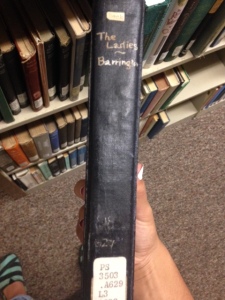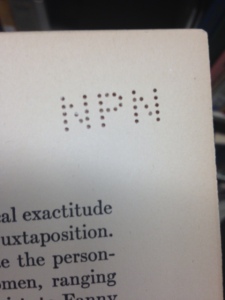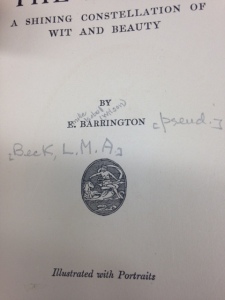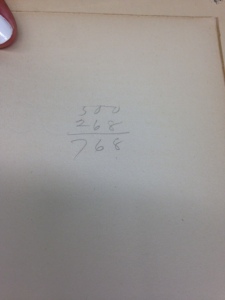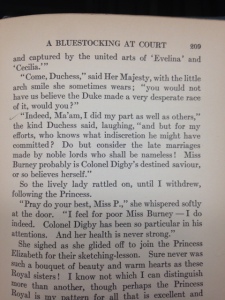After a good half hour of searching through books that are older than my grandparents and have a distinct “old book” smell, I finally found the perfect,margin marked up, before 1923, book. Stacked on the PS shelf, it was staring at me: E. Barrington’s The Ladies!, published in Boston 1922.
Although it was not the book I originally set out to look for,it was from the same time period and the same subject, women, plus the spine of this book looked promising.
On one of the first pages had “NPN” branded into it, meaning this book was part of the New Paltz collection from before it was SUNY New Paltz. This book belonged originally to New Paltz Normal School– the college when it was a teaching school back in the early 1900s.
Even though this book was not extremely marked up, I found a few marginalia worth noting. Just from the cover page, someone was kind enough to note the Author’s full name- Emilie Isabel Wilson Barrington. The Person also wrote “Beck L.M.A.” I researched what this could mean and came up with nothing solid other than it may possibly be the name of the copyright.
In the back of the book I found someone left a simple math equation: 500+268= 768. Could someone have been multitasking reading and math homework?
One piece of Marginalia I found worth looking into was a simple, neat check mark next to the quote, “Indeed, Ma’am, I did my part as well as others.” After reading the before and after parts of the book I came to conclude this could be an important part to the plot because the duchess who says this line is defending herself to “her majesty.” Since the Duchess’s superior tried to make a joke of the girl, asking if she actually believed the duke would come for her, the Duchess stands up for herself with this quote that means yes, she did think so because she did everything she was supposed to, he is in the wrong. Considering women were not granted suffrage until 1920 and this book was published in 1922, it is very ballsy for this woman to take such a stand– and perhaps the person making this mark thought the same thing.
Looking for marginalia in old books turned out to be much more interesting than I expected. It leaves you wondering who left these marks and what they were really thinking, can our hypothesizes be correct? Leaving marks in books is like leaving a mystery legacy, you will never know who will find it, and no one will ever know you left it.
